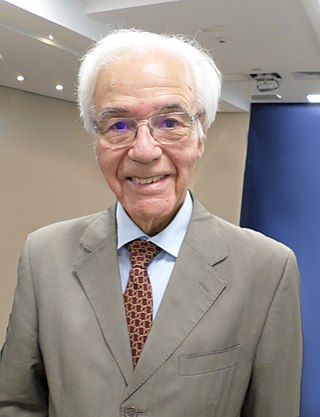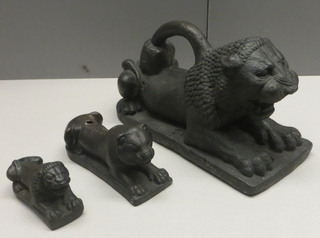Phoenician is an extinct Canaanite Semitic language originally spoken in the region surrounding the cities of Tyre and Sidon. Extensive Tyro-Sidonian trade and commercial dominance led to Phoenician becoming a lingua franca of the maritime Mediterranean during the Iron Age. The Phoenician alphabet spread to Greece during this period, where it became the source of all modern European scripts.

Samuel Bochart was a French Protestant biblical scholar, a student of Thomas Erpenius and the teacher of Pierre Daniel Huet. His two-volume Geographia Sacra seu Phaleg et Canaan exerted a profound influence on seventeenth-century Biblical exegesis.

François-Thomas-Marie de Baculard d'Arnaud was a French writer, playwright, poet and novelist. His series of novellas Les Épreuves du sentiment inspired Bellini's opera Adelson e Salvini.

Marc Vulson de la Colombière (†1658) or Sieur de la Colombière was a French heraldist, historian, poet, minion of the royal court. His name is sometimes spelt as Wulson and also as Volson.

Nasr was apparently a pre-Islamic Arabian deity of the Himyarites. Reliefs depicting vultures have been found in Himyar, including at Maṣna'at Māriya and Haddat Gulays, and Nasr appears in theophoric names. Nasr has been identified by some scholars with Maren-Shamash, who is often flanked by vultures in depictions at Hatra. Hisham ibn Al-Kalbi's Book of Idols describes a temple to Nasr at Balkha, an otherwise unknown location. Some sources attribute the deity to "the dhū-l-Khila tribe of Himyar". Himyaritic inscriptions were thought to describe "the vulture of the east" and "the vulture of the west", which Augustus Henry Keane interpreted as solstitial worship; however these are now thought to read "eastward" and "westward" with n-s-r as a preposition. J. Spencer Trimingham believed Nasr was "a symbol of the sun".

Jacques Datin was a French composer.
Count Robert du Mesnil du Buisson was a French historian, soldier, and archeologist. He was noted for his early use of geophysical survey for archaeology. He was son of Auguste, comte du Mesnil du Buisson and Berthe Roussel de Courcy, and married Jeanne Leclerc de Pulligny on 26 June 1923.

M'hamed Hassine Fantar is a professor of Ancient History of Archeology and History of Religion at Tunis University.

The Assyrian lion weights are a group of bronze statues of lions, discovered in archaeological excavations in or adjacent to ancient Assyria.
Matthieu Bochart was a French Protestant minister at Alençon from 1635-1662.

Since early modern times, a number of biblical ethnonyms from the Table of Nations in Genesis 10 have been used as a basis for classifying human racial and national identities. The connection between Genesis 10 and contemporary ethnic groups began during classical antiquity, when authors such as Josephus, Hippolytus and Jerome analyzed the biblical list.

The Corpus Inscriptionum Semiticarum is a collection of ancient inscriptions in Semitic languages produced since the end of 2nd millennium BC until the rise of Islam. It was published in Latin. In a note recovered after his death, Ernest Renan stated that: "Of all I have done, it is the Corpus I like the most."

The Bodashtart inscriptions are a well-known group of between 22 and 24 Phoenician inscriptions from the 6th century BC referring to King Bodashtart.

The Yehawmilk stele, de Clercq stele, or Byblos stele, also known as KAI 10 and CIS I 1, is a Phoenician inscription from c.450 BC found in Byblos at the end of Ernest Renan's Mission de Phénicie. Yehawmilk, king of Byblos, dedicated the stele to the city’s protective goddess Ba'alat Gebal.

The Carpentras Stele is a stele found at Carpentras in southern France in 1704 that contains the first published inscription written in the Phoenician alphabet, and the first ever identified as Aramaic. It remains in Carpentras, at the Bibliothèque Inguimbertine, in a "dark corner" on the first floor. Older Aramaic texts were found since the 9th century BC, but this one is the first Aramaic text to be published in Europe. It is known as KAI 269, CIS II 141 and TAD C20.5.

The Neirab steles are two 8th-century BC steles with Aramaic inscriptions found in 1891 in Al-Nayrab near Aleppo, Syria. They are currently in the Louvre. They were discovered in 1891 and acquired by Charles Simon Clermont-Ganneau for the Louvre on behalf of the Commission of the Corpus Inscriptionum Semiticarum. The steles are made of black basalt, and the inscriptions note that they were funerary steles. The inscriptions are known as KAI 225 and KAI 226.

The Punic Tabella Defixionis is a Punic language curse tablet, inscribed on a lead scroll, found in Carthage by Paul Gauckler in 1899. It is currently held at the Carthage National Museum. It is known as KAI 89.

Sarafand is a village in southern Lebanon located 10 km south of Sidon overlooking the Mediterranean Sea.
The Phoenician Adoration steles are a number of Phoenician and Punic steles depicting the adoration gesture (orans).

The Tripolitania Punic inscriptions are a number of Punic language inscriptions found in the region of Tripolitania – specifically its three classical cities of Leptis Magna, Sabratha and Oea (Tripoli), with the vast majority being found in Leptis Magna. The inscriptions have been found in various periods over the last two centuries, and were catalogued by Giorgio Levi Della Vida. A subset of the inscriptions feature in all the major corpuses of Canaanite and Aramaic inscriptions, notably as KAI 119-132.



















